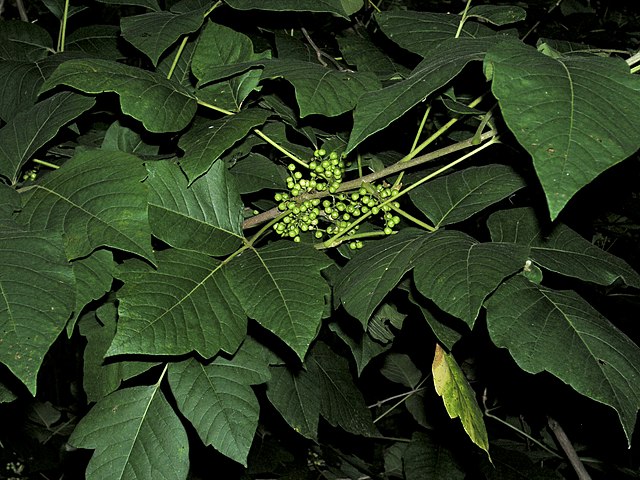With our lush forests, expansive mountains, and abundant plant life, West Virginia proves to be the perfect place to get in touch with nature. Miles upon miles of trails weave through the state, providing nature-lovers the opportunity to explore the great outdoors. While navigating the state’s vast wilderness, it’s imperative to possess some knowledge about our plant life. Though these plants have an unmatched beauty, sometimes it’s better to appreciate our flora from afar.
Poison Ivy
Inquire of any native, and you’ll quickly learn of the disdain held for this infamous plant, poison ivy. While trekking the West Virginia mountains, you’ll likely come across poison ivy, so you must be able to identify it. Poison ivy has a stem with three leaflets at its top. In the fall, its leaves take on a reddened color. In the summer, poison ivy possesses white berries. Every part of this plant is poisonous to the touch. An oil called urushiol is to blame for this. When this oil meets the skin, it produces a reddish, itchy rash. Though the effects are different for everyone, poison ivy will likely put a damper on a West Virginia adventure.
Poison Hemlock
Poison hemlock has a shiny stem dotted with purple spots, and from this stem, multiple branches arise. Much like poison ivy, every part of this plant is poisonous. However, the danger lies in ingesting this plant. Many people mistake poison hemlock for one of West Virginia’s edible plants called anise, so explorers must be wary of consuming anything on the trail.
Moonseed
Moonseed is a prominent poisonous plant in West Virginia. It is a woody vine that grows in a spiral fashion around trees. Avoid ingesting this plant, for it can inhibit muscle movement. Much like poison hemlock, moonseed provides another reason to avoid consuming plants along the trails.
Wood Nettle & Stinging Nettle
Relatives wood nettle and stinging nettle are two more prevalent toxic plants in West Virginia. Hence its name, wood nettles exist in densely wooded areas. This plant is known for its egg-shaped leaves. Stinging nettles, on the other hand, abide in damp, disturbed areas. They possess pairs of heart-shaped leaves placed oppositely on their stalk. Though they differ in physical location and characteristics, both plants poison people using the same mechanism. When someone comes into contact with their leaves, small hairs break off into the skin. Within these hairs, there is a mixture of chemicals. These chemicals cause an hour-long feeling of burning and itching.
While exploring West Virginia’s extensive trail systems, be sure to keep an eye out and keep your distance. There are a few things that you can do to ensure you and your fellow adventurers are as safe as can be. These are to educate yourself about West Virginia’s flora, dress appropriately, supervise pets, and refrain from touching/burning poisonous plants that are either alive or dead.
If you do interact with a poisonous plant, act quickly. In the case of ingesting a toxic plant, contact one of West Virginia’s Poison Control Centers. If you touch a poisonous plant, wash the area with soap and cold water as soon as possible. Invest in Benadryl and Calamine to aid in the healing process.
With over 200 plants considered poisonous in West Virginia, the more you know, the better. We want you to have both a safe and enjoyable time here in Almost Heaven.
Information provided by John Beckman, Nanci Bross-Fregonara, Dean Walton, American Red Cross, yourhealth.com and Access Health, Inc. contributed to this blog.




